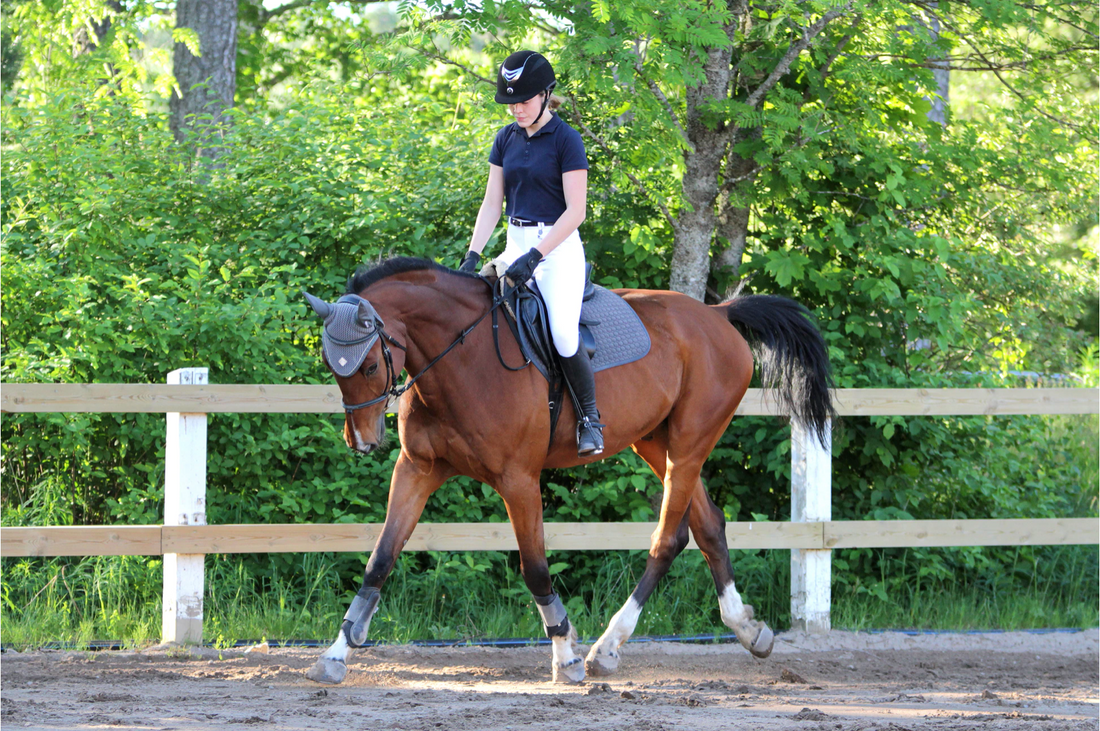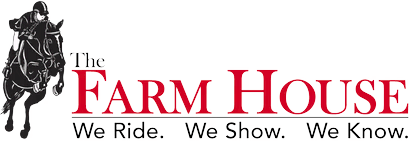
What To Expect At Your First Horseback Riding Lesson
Michelle DrumMost of us here started horseback riding lessons knowing nothing about horses, which is probably the norm. After 2 years of begging for horseback riding lessons, my parents finally gave in when I was 9 years old. We lived in the city and my parents knew nothing about horses or where I’d gotten bitten by the horse bug. That said my mom made some calls and scheduled some beginner lessons for me at a local stable. The phone call left her feeling unsure about what she needed to purchase to get me outfitted for my first lesson or what to expect. I thought it might be a good idea to set up new riders with what to expect at your first lesson.
Most riders who start in an English discipline, commonly start learning to ride in a style known as the “Hunters”. This discipline stems from England and is based on the foundation of riding skills required for Fox hunting. (It should be noted that in the United States the Fox although chased by hounds, is rarely killed) When you arrive at the stables a few rules of etiquette should be noted.
For your first riding lesson, unless otherwise requested, you should wear a heeled shoe with a high ankle known as a paddock boot. The paddock boot is the preferred shoe to start your journey riding horses. The boot offers a 1-1.5” heel to prevent your foot from slipping through the stirrup irons while you are learning to ride. The high upper and outer of the paddock boot come up above the ankle and provides support and stability for your lower leg as well as protection while on the ground working around the horse.
Jeans work well as entry-level horseback riding pants, but the new rider will quickly find that the inner seam of jeans is highly uncomfortable while riding and will cause blisters where the stirrup leather rubs against your inner calf. Many riders with either purchase breeches to take lessons in or invest in a pair of half chaps, to wear over jeans. Half chaps fit snuggly around your lower leg and over your paddock boots. Half Chaps are commonly made from suede or leather and protect the calf and lower leg from being rubbed by stirrup leathers.
Learn more: What to Wear While Horseback Riding

The last thing the new rider will need is a horseback riding helmet. A bicycle helmet does not afford the same protection or coverage as a horseback riding helmet. Investing in your riding helmet is the best way to protect your head in the event of a fall. Helmets are available in a variety of price points to fit just about any budget. Once you have acquired these pieces you are ready for your first lesson.
At your first riding lesson, you may not have a lot of ride time at your first lesson. There is a lot more to learn at the first lesson than just getting on! You will meet your riding instructor and from there, students can expect to learn the proper way to handle a horse on the ground- beginning with catching and securing your horse.
You will learn how to put on the horse’s halter (a head collar for leading and securing the horse while working with it from the ground). The proper way to lead the horse and how to secure the horse for grooming and getting ready to ride. Once the horse is secured, you will then learn about grooming the horse and the purpose for each of the tools, and how to use them properly. One unique tool that you will learn how to use is a hoof pick. This handheld object resembles an odd flat-sided screwdriver. Your instructor will teach you how to ask the horse to pick up its feet, so you can use the hoof pick to check the horse’s feet for rocks or debris that may be lodged in the hoof.

After the horse has been groomed, you will be shown and taught the names for each piece of the horse’s tack. Tack refers to the equipment used to ride such as the saddle, bridle, girth and any other equipment utilized for your lesson. Getting ready to ride is also known as ‘tacking up’ the horse. Each horse you ride may require individualized equipment, you should always check with your instructor whenever you are scheduled to ride a horse you are unfamiliar with.
The instructor will then give you a brief overview of how the different pieces of equipment are placed on the horse and in what order they should be placed. Pay particular attention to where and how the saddle is placed on the horse’s back and how the girth is attached as well as how the instructor asks the horse to accept the bit while being bridled. With consistent lessons, guidance, and practice you may eventually be granted the opportunity of being trusted to tack up your horse for your lessons. This was always my favorite part of lessons, spending time alone with my lesson horse before or after my lesson was complete, grooming and taking care of him.
Once you and your instructor have tacked up your horse you are almost ready to go for your first ride! Your instructor will teach you how to lead the horse to the riding area, check the girth to make sure it is tight enough, and then how to give your stirrup irons a rough adjustment before mounting. Once complete your instructor may lead you to a mounting block, or teach you how to be given a ‘leg up’ on to your horse. Once on the horse, try to stay relaxed and sit quietly while your instructor adjusts your stirrup irons for the correct length. After your irons are correct, you will be shown the proper way to hold the reins. Your reins are part of how you communicate with the horse. Once your hands are educated, the reins not only help to steer and stop the horse, they also help you feel what the horse is thinking as you are riding, helping you to plan as you learn more advanced riding concepts later.

Your instructor will likely walk with you on a small circle in your first lesson, teaching you to practice core concepts like where your foot belongs in the stirrup irons, leg position, how to keep your heels down to find balance. Your first few lessons will be spent this way, there is a lot of multi-tasking going on at first while you teach your body new muscle memory exercises. After you master the basics of position and steering your horse you are ready to start learning how to ride the other gaits such as the trot and canter.
The new rider will learn to obtain proper balance and position in the saddle through exercises like practicing 2-point / jumping position. This exercise helps stretch the calf muscles and push down the rider’s heels. Keeping your heels down is the core of a rider’s balance and security on the horse at all gaits.
The beginning rider also learns to steer and stop the horse before moving on to walking independently in the riding ring. Once these skills are mastered students are often taught how to post at the walk, followed by jumping position at the trot, sitting trot, and posting/rising trot. Posting and sitting trot are the hardest skills to master, but once these skills are perfected riders are ready to move on to more challenging gaits and exercises. Trot exercises are mastered when the rider can sit up straight without being stiff while, looking up and keeping a steady leg with the heel down, as well as a quiet upper body with a steady hand.

Some simple exercises new riders can utilize while not riding are heel drops – start by placing the balls of your feet on the edge of a step, then sinking into your heels as you hold on to the handrail. This exercise helps stretch out your calf muscles making it easier to push your heels down and find balance at your lessons. As this exercise becomes less challenging you can up the ante by not holding on to the handrail, once that is mastered, try putting a basketball between your knees as you practice this exercise.
Anyone who says that the horse does all the work when it comes to horseback riding has never truly ridden a horse! Horseback riding requires both physical and mental strength as well as stamina. It’s easy to get discouraged at first while trying to manage where your body belongs on a moving animal, but if you work hard you will have the core skills mastered and will find yourself ready to master new challenges while horseback riding!
If you’re just getting started check out our curated list of good, better, and best Horseback Riding Gear for Kids.
You might also like:

1 comment
Heya. I work at a decent riding school. There are a few of us. We like to take it in turns in order to to teach the pupils a balanced curriculum. Our pupils literally get a chance to learn everything here. Skills that they master over the years include a focus on basic key skills in stable management to the advanced skills in dressage. We also prepare lots of really fun lessons in addition that incorporate various aspects of riding and gentle eventing too.
Best wishes. We always set all of the children three smart goals each term which we decide at team meetings. Every little helps. My key role is to introduce new riders to stable management and basic skills in dressage, staying safe, teamwork and communication. My colleagues teach them about things like barrel racing, understanding horses, and other advanced skills like trail riding and rodeo skills. We divide other fun tasks like handing out leaflets, fundraising, dealing with visitors and tours amongst us all.